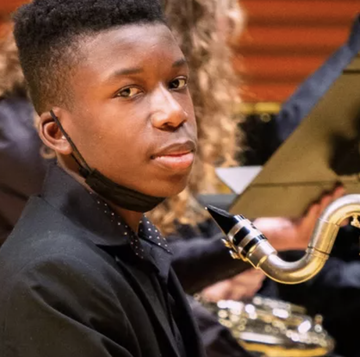Naiylah was born and raised in Brooklyn, where she learned the importance of grit, humor, and kindness. She began her counseling career at Harlem Children’s Zone, where she was a student advocate for students, helping bridge the gap between them and senior management. She received her degree at Philly University, studying marriage and family therapy, and later went on to start her own full-time private practice. Today, Nai is a staff therapist at Real.
As a Black therapist, I know the mental health field was never created for people like me, whether we’re clinicians or clients.
It’s true that we need to move forward to increase access to mental health care, but it’s also critical that we focus on fixing the systemic racism that runs through the profession like groundwater, seeping into every aspect of the practice.
There aren’t enough BIPOC in the profession, but it’s not because we aren’t interested. In case you didn’t know, clinicians must complete grueling clinical hours of training for little money after acquiring what’s likely hundreds of thousands of dollars in student debt. It’s a lifestyle that’s almost impossible to endure if you don’t have family money or a partner for financial support, as many of our white counterparts do.
Our lack of representation impacts clients. It’s no surprise that BIPOC communities experience racial trauma in overt and covert ways, and both have a profound psychological and physical impact on our health.
We see the impact on people of color experiencing symptoms of hypervigilance, suspicions, flashbacks, nightmares, and even headaches, heart palpitations, or cardiovascular issues.
When we collectively witness events such as police brutality against people who look like us, it can trigger feelings of anxiety and even grief. For example, in the days after George Floyd was murdered, I was fine until I found myself on my floor in meditation with tears rolling down my face. It takes only one traumatic event to have a deep psychological impact; when someone continually experiences racially traumatizing events, the psychological impact is greatly amplified.
However, because there are fewer BIPOC clinicians, there’s less research and fewer theories that address the nuances of relationships in BIPOC communities. That means there isn’t even enough scientific evidence to prove what types of therapies, modalities, and interventions are most effective for BIPOC clients experiencing those psychological effects.
Despite these challenges, we can rectify these systemic injustices by making entering into the field more financially feasible for BIPOC. We can create spaces, events, and programs that target these communities and provide resources needed for efficacious treatment. We can ensure all training includes courses on the nuances faced by BIPOC. We can advocate that therapy be covered by insurance companies. We can embrace traditional healing practices that are specific to BIPOC communities, such as utilizing shaman or those who perform divination practices, as a valid form of treatment, and there are so many more.
As a Black therapist, I try to do my part by working with organizations that strive to make mental health care more accessible for my community, value diversity of experience and thought, and provide services that were created for and with BIPOC folk—and there are many other clinicians, researchers, and thought leaders helping the BIPOC cope with the reality of racial trauma too. But now is the time for the mental health field as a whole to take inventory of the way it has contributed to systemic racism, consult with those in the field who have pioneered this work, and align with the purpose to heal our minds and hearts.













